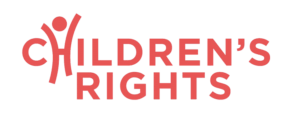
Facilitated by Christine Creter of Creter Group, the session supported this national nonprofit’s efforts to lead with more clarity, adaptability, and connection.
Children’s Rights is a national advocacy organization working to improve the lives of children and families impacted by child welfare, juvenile legal, immigration, and other government systems. Their team uses legal action and policy reform to hold governments accountable for keeping kids safe and ensuring access to services vital to their well-being.
As one of five nonprofits selected to receive a complimentary session as part of Creter Group’s 20th anniversary year, they took part in an Insights Discovery session tailored to their needs.
Their executive team had specific goals in mind for the session: improve how they support each other as leaders and how they lead the rest of the organization. Like many nonprofits, their leaders are mission-driven, collaborative, and stretched across a range of responsibilities. They also work remotely and often lead project teams that include both internal staff and external counsel. This constant shift in team dynamics requires strong communication, especially when priorities are urgent.
Understanding Communication Style Gaps
Christine Creter facilitated the session, helping each member of the executive team understand their individual communication preferences through an Insights Discovery Personal Profile. After reviewing individual profiles, the group reflected on the team’s collective make-up by analyzing their profiles plotted visually on a Team Insights Wheel.
It didn’t take long to notice some trends.
There were clear strengths. The team has many wonderful communicators, successful at motivating people around them with enthusiasm and persuasive, positive energy. This is a valuable characteristic of a leadership team. The team also has a few people who are focused on information and details, as well as a clear focus on including the right people in conversations and generally caring about the well-being of the organization as a whole.
There were also some collective gaps. The team collectively doesn’t naturally demonstrate what Insights calls “Fiery Red” energy. These are traits often tied to decisiveness, directness, and a focus on outcomes. This absence lined up with what the group had already noticed: people were sometimes hesitant to speak directly, unclear about deadlines, or avoiding tough conversations.
Communication That Works for Everyone
Rather than offering general leadership advice, the session focused on what would actually help this unique team work together better. That meant learning how to flex behaviors that didn’t feel as natural, such as being more direct when setting expectations or stepping into feedback conversations that might feel uncomfortable.
It also meant learning how to adapt when leading others who have very different styles. For a remote team working across changing groups, this flexibility is essential.
Christine guided the group through specific ways to stretch their communication style while still being authentic. These shifts weren’t about pretending to be someone else. They were about choosing a communication approach that matched the needs of the moment.
What’s Next
The team left the session with a better understanding of themselves, a shared language, and tools they could apply immediately.
“Christine was a wonderfully engaging facilitator, and our executive leadership team enjoyed the experience of getting to know each other on a deeper level. Learning how best to communicate with each other to strengthen our teamwork can only benefit us in delivering the results for children that we achieve,” said Susan Reeves, Director of Talent & Operations.
For an organization like Children’s Rights, where the work is high-stakes and the teams are constantly adjusting, establishing clear objectives and holding themselves and others accountable to milestones can help the organization stay focused on what matters: improving systems for children.
